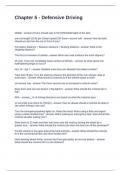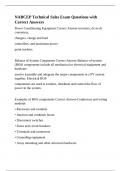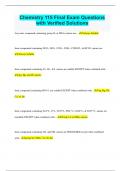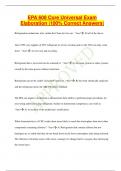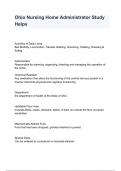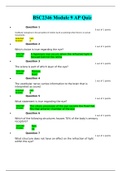Tachypnea with activity/feeding
Diaphoresis
Increased pulmonary blood flow Poor weight gain
Exercise intolerance
Dyspnea on exertion
▪Increased RR and /or effort at rest or with activity
▪Poor feeding; fatigues during feeding
▪Excessive sweating in infant, unrelated to the environment, especially while feeding
▪Recurrent respiratory infections
▪Decreased exercise tolerance
CHD Evaluation
▪Squatting with fatigue (rare)
▪Chest pain (uncommon, usually non cardiac origin)- most common with severe aortic
stenosis
Syncope (uncommon)
Child with cyanotic heart defect squats (knee-chest position) to relieve cyanosis spells
▪Chest: Precordial bulge (cardiomegaly); ↑ precordial activity, R ventricular lift, or left-
sided heave; diffuse PMI; precordial thrill (Gr IV/VI murmur); suprasternal thrill (aortic
stenosis)
▪S4-always pathologic
▪Ejection clicks (heard with dilated great vessels or valve abnormalities). Best heard
during ventricular systole (early, mid, or late)
▪Early (mid-LSB) -pulmonic valve
▪Mid - to- late (apex) - MVP
CHD Physical exam
▪Variation with position: 4 Ss' ( sitting, supine, standing, squatting) may differentiate
innocent (or benign) /pathological
▪Bounding: PDA, AR, AV malformation; low diastolic pressure (fever, anemia, septic
shock)
▪Narrow or thready: ↓ c.o. (decompensated HF pericardial tamponade, severe AS
▪Pulsus paradoxus: reduction in pulse amplitude (>10 mmHg) w inspiration
(PERICARDIAL TAMPONADE)
UE = LE. Absent or weak femoral pulse = COA
Newborn
Peripheral Pulmonary Stenosis
Still
innocent murmur types Pulmonary Ejection
Venous Hum
Innominate or Carotid Bruit
▪Usually incidental finding and asymptomatic
LSB without radiation. Short, soft, vibratory Gr I-II/VI, subsides with mild pressure to
Newborn murmur
abdomen. Disappears by 2-3 wks.
▪ULSB, at the back, & axillae. Soft, short, high-pitched, Gr I-II/VI systolic ejection
Peripheral Pulmonary Stenosis
murmur. Disappears by 2 y/o.
MOST COMMON INNOCENT MURMUR EARLY CHILDHOOD (2-7 y/o). Loudest
midway between apex & LLSB. Musical or vibratory, short, high-pitched, Gr I-III/VI
Still Murmur
early systolic. Loudest when supine, diminishes or disappears with inspiration &
sitting position. Louder with fever, anemia, sinus tachycardia.
MOST COMMON IN OLDER CHILDREN & ADULTS. Heard from age 3 years on. Soft
Pulmonary Ejection Murmur
systolic ejection murmur, Gr I-II @ ULSB. Louder in supine position or when c.o. ↑
Heard >2 y/o. Infraclavicularr area on R. Continuous musical hum Gr I-II, accentuated in
Venous Hum
diastole w inspiration. Best heard in sitting position
, Older child & adolescents. Heard R supraclavicular area. Long systolic ejection murmur,
Innominate or carotid bruit harsh, Gr. II-II/VI. Accentuated by light pressure on carotid artery. Must differentiate
from AS
▪≥ grade 3 systolic murmur; diastolic murmur
Pathologic murmur
▪A bluish tint to the skin, lips and fingernails (cyanosis)
▪Poor eating, failure to thrive
▪Fast breathing or breathlessness
▪Fatigue
▪Swelling of legs, feet or abdomen
VSD
▪Rapid heart rate
▪Failure to thrive most common symptom
•Some remain large, while others become smaller over time. It is not unusual for
small-to-medium sized VSD’s to eventually close spontaneously. Many, but not all
that remain will require surgery.
▪Group A β-hemolytic streptococcal infection of the upper respiratory tract is the
essential trigger in predisposed individuals.
Rheumatic Fever ▪Jones Criteria for diagnosis of RF
▪2 major; or 1 major + 2 minor manifestations; + supporting evidence of streptococcal
infection
Jones criteria for rheumatic fever
Acute Episode
▪Eradication of Strep infection
▪PCN (clarithromycin if allergic)
▪Aspirin 30-60mg/kg/day divided QID for arthritis & fever, 2-6 weeks
▪Corticosteroids: Reserved for those with carditis
rheumatic fever treatment
After Acute Episode
▪Long-term prophylaxis for residual rheumatic heart disease
▪Transient to no cardiac involvement: 5-10 years therapy or 21 y/o (whichever is
longer)
▪Prophylaxis is recommended ONLY for pts. w prosthetic valve
▪Diagnostic criteria
▪Fever >5 days plus (4/5)
▪Bilateral, painless, nonexudative conjunctivitis with limbic sparing
▪Tip or oral cavity changes - lip cracking and fissuring, strawberry tongue, and
inflammation of the oral mucosa
Kawasaki Disease
▪Cervical lymphadenopathy greater than or equal to 1.5 cm in diameter and usually
unilateral
▪Polymorphous exanthema
▪Extremity changes (redness and swelling of the hands and feet with subsequent
desquamation).
HCM ▪leading cause of sudden cardiac death in young persons.
Diaphoresis
Increased pulmonary blood flow Poor weight gain
Exercise intolerance
Dyspnea on exertion
▪Increased RR and /or effort at rest or with activity
▪Poor feeding; fatigues during feeding
▪Excessive sweating in infant, unrelated to the environment, especially while feeding
▪Recurrent respiratory infections
▪Decreased exercise tolerance
CHD Evaluation
▪Squatting with fatigue (rare)
▪Chest pain (uncommon, usually non cardiac origin)- most common with severe aortic
stenosis
Syncope (uncommon)
Child with cyanotic heart defect squats (knee-chest position) to relieve cyanosis spells
▪Chest: Precordial bulge (cardiomegaly); ↑ precordial activity, R ventricular lift, or left-
sided heave; diffuse PMI; precordial thrill (Gr IV/VI murmur); suprasternal thrill (aortic
stenosis)
▪S4-always pathologic
▪Ejection clicks (heard with dilated great vessels or valve abnormalities). Best heard
during ventricular systole (early, mid, or late)
▪Early (mid-LSB) -pulmonic valve
▪Mid - to- late (apex) - MVP
CHD Physical exam
▪Variation with position: 4 Ss' ( sitting, supine, standing, squatting) may differentiate
innocent (or benign) /pathological
▪Bounding: PDA, AR, AV malformation; low diastolic pressure (fever, anemia, septic
shock)
▪Narrow or thready: ↓ c.o. (decompensated HF pericardial tamponade, severe AS
▪Pulsus paradoxus: reduction in pulse amplitude (>10 mmHg) w inspiration
(PERICARDIAL TAMPONADE)
UE = LE. Absent or weak femoral pulse = COA
Newborn
Peripheral Pulmonary Stenosis
Still
innocent murmur types Pulmonary Ejection
Venous Hum
Innominate or Carotid Bruit
▪Usually incidental finding and asymptomatic
LSB without radiation. Short, soft, vibratory Gr I-II/VI, subsides with mild pressure to
Newborn murmur
abdomen. Disappears by 2-3 wks.
▪ULSB, at the back, & axillae. Soft, short, high-pitched, Gr I-II/VI systolic ejection
Peripheral Pulmonary Stenosis
murmur. Disappears by 2 y/o.
MOST COMMON INNOCENT MURMUR EARLY CHILDHOOD (2-7 y/o). Loudest
midway between apex & LLSB. Musical or vibratory, short, high-pitched, Gr I-III/VI
Still Murmur
early systolic. Loudest when supine, diminishes or disappears with inspiration &
sitting position. Louder with fever, anemia, sinus tachycardia.
MOST COMMON IN OLDER CHILDREN & ADULTS. Heard from age 3 years on. Soft
Pulmonary Ejection Murmur
systolic ejection murmur, Gr I-II @ ULSB. Louder in supine position or when c.o. ↑
Heard >2 y/o. Infraclavicularr area on R. Continuous musical hum Gr I-II, accentuated in
Venous Hum
diastole w inspiration. Best heard in sitting position
, Older child & adolescents. Heard R supraclavicular area. Long systolic ejection murmur,
Innominate or carotid bruit harsh, Gr. II-II/VI. Accentuated by light pressure on carotid artery. Must differentiate
from AS
▪≥ grade 3 systolic murmur; diastolic murmur
Pathologic murmur
▪A bluish tint to the skin, lips and fingernails (cyanosis)
▪Poor eating, failure to thrive
▪Fast breathing or breathlessness
▪Fatigue
▪Swelling of legs, feet or abdomen
VSD
▪Rapid heart rate
▪Failure to thrive most common symptom
•Some remain large, while others become smaller over time. It is not unusual for
small-to-medium sized VSD’s to eventually close spontaneously. Many, but not all
that remain will require surgery.
▪Group A β-hemolytic streptococcal infection of the upper respiratory tract is the
essential trigger in predisposed individuals.
Rheumatic Fever ▪Jones Criteria for diagnosis of RF
▪2 major; or 1 major + 2 minor manifestations; + supporting evidence of streptococcal
infection
Jones criteria for rheumatic fever
Acute Episode
▪Eradication of Strep infection
▪PCN (clarithromycin if allergic)
▪Aspirin 30-60mg/kg/day divided QID for arthritis & fever, 2-6 weeks
▪Corticosteroids: Reserved for those with carditis
rheumatic fever treatment
After Acute Episode
▪Long-term prophylaxis for residual rheumatic heart disease
▪Transient to no cardiac involvement: 5-10 years therapy or 21 y/o (whichever is
longer)
▪Prophylaxis is recommended ONLY for pts. w prosthetic valve
▪Diagnostic criteria
▪Fever >5 days plus (4/5)
▪Bilateral, painless, nonexudative conjunctivitis with limbic sparing
▪Tip or oral cavity changes - lip cracking and fissuring, strawberry tongue, and
inflammation of the oral mucosa
Kawasaki Disease
▪Cervical lymphadenopathy greater than or equal to 1.5 cm in diameter and usually
unilateral
▪Polymorphous exanthema
▪Extremity changes (redness and swelling of the hands and feet with subsequent
desquamation).
HCM ▪leading cause of sudden cardiac death in young persons.


